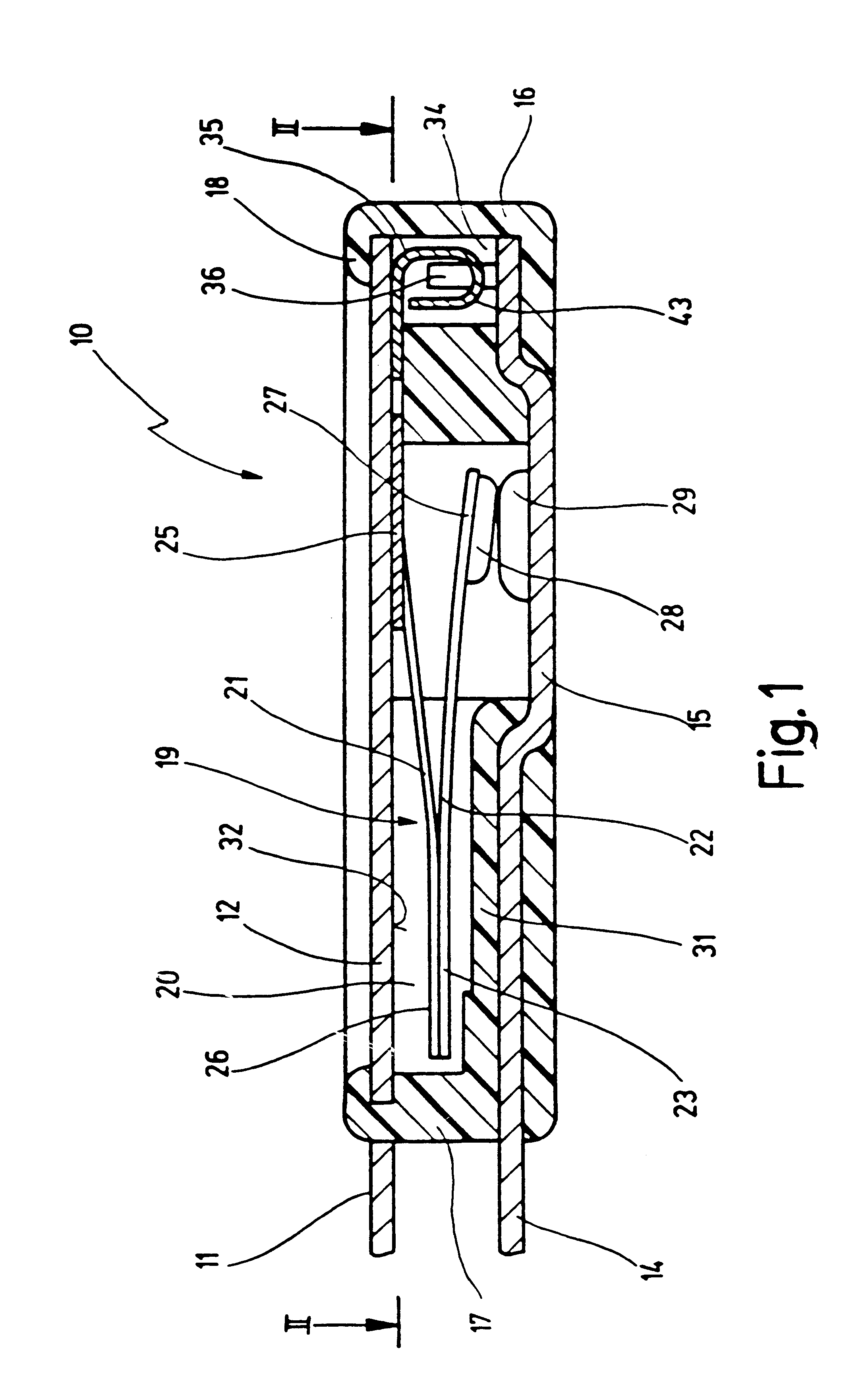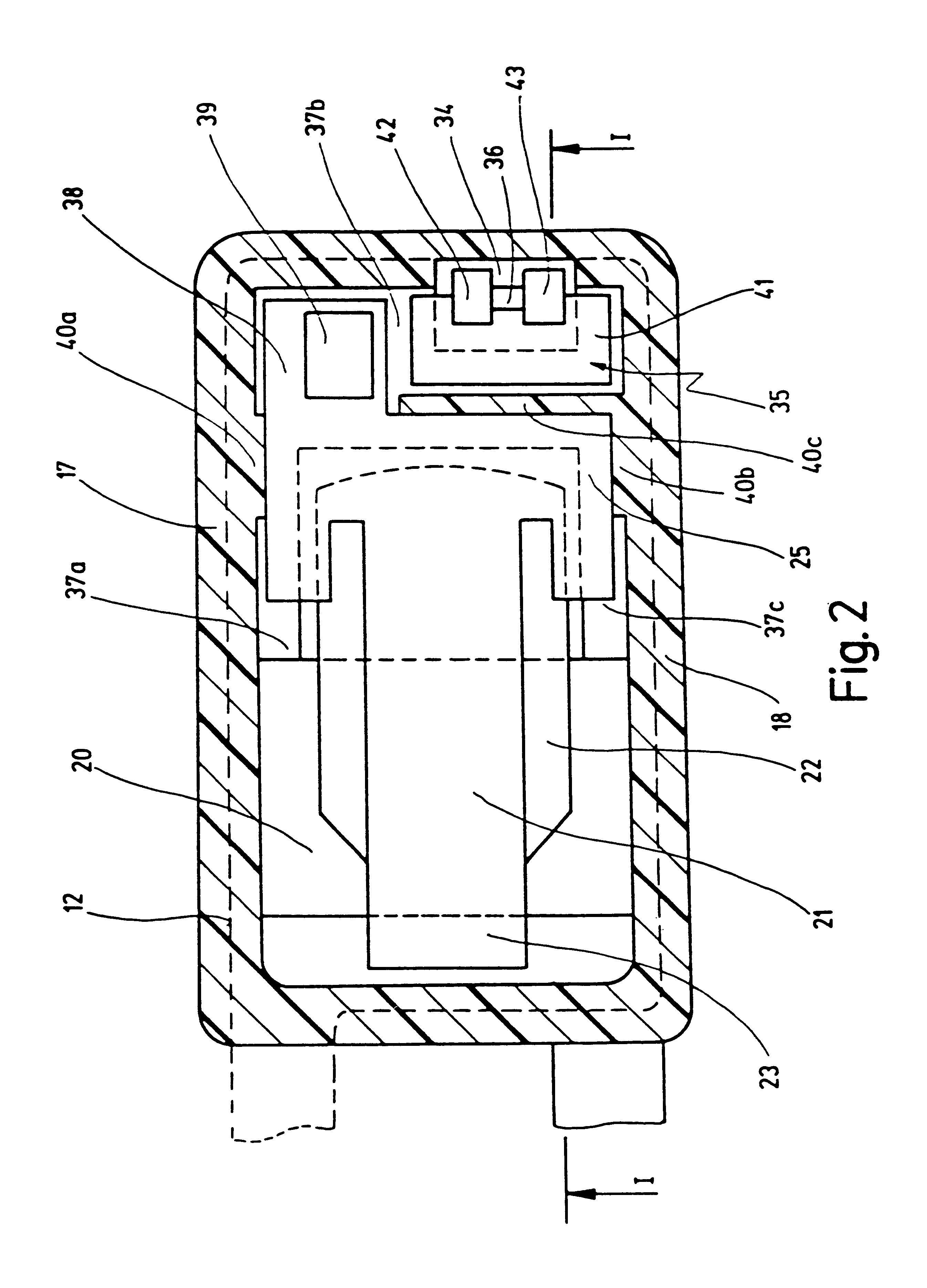Switch having an insulating support
a technology of insulating support and switch, which is applied in the direction of relays, contacts, thermal switch details, etc., can solve the problems of inability to operate, further disadvantage, and difficulty in design terms, and achieves the effect of reducing the number of switches
- Summary
- Abstract
- Description
- Claims
- Application Information
AI Technical Summary
Benefits of technology
Problems solved by technology
Method used
Image
Examples
Embodiment Construction
In FIG. 1, reference numeral 10 generally designates a new switch, which is shown in schematic longitudinal section.
The new switch 10 has a first external terminal 11 that is joined integrally to a flat or planar cover electrode 12. Also provided is a second external terminal 14 that is configured integrally with a bottom electrode 15. Cover electrode 12 and bottom electrode 15 are retained on an insulating support 16 that holds cover electrode 12 and bottom electrode 15 spaced apart parallel to one another.
While insulating support 16 can theoretically be open laterally, FIG. 1 shows an embodiment in which insulating support 16 comprises a cup-shaped lower housing part 17 that is configured around bottom electrode 15, by injection embedding or encapsulation, in such a way that bottom electrode 15 is an integral constituent of lower housing part 17. Lower housing part 17 is closed off by cover electrode 12 and is held in lossproof fashion by a hot-welded rim, indicated at 18, of insu...
PUM
 Login to View More
Login to View More Abstract
Description
Claims
Application Information
 Login to View More
Login to View More - R&D
- Intellectual Property
- Life Sciences
- Materials
- Tech Scout
- Unparalleled Data Quality
- Higher Quality Content
- 60% Fewer Hallucinations
Browse by: Latest US Patents, China's latest patents, Technical Efficacy Thesaurus, Application Domain, Technology Topic, Popular Technical Reports.
© 2025 PatSnap. All rights reserved.Legal|Privacy policy|Modern Slavery Act Transparency Statement|Sitemap|About US| Contact US: help@patsnap.com



